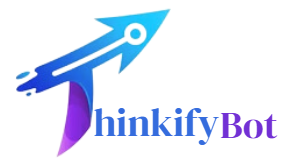Introduction
Technology is revolutionizing education, and tech lab teachers are at the forefront of this transformation. With the right tools, educators can create engaging, hands-on learning experiences that prepare students for a rapidly evolving digital world. From interactive smart boards to AI-powered learning assistants, cutting-edge educational gadgets are making teaching more effective, interactive, and fun. This article explores the latest innovations in educational technology, highlighting tools that enhance STEM education and foster creativity in tech labs.
The Role of Technology in Modern Classrooms
Traditional teaching methods are evolving, with technology bridging the gap between theoretical knowledge and practical application. Modern educational gadgets enhance learning by:
- Increasing student engagement through interactive content.
- Simplifying complex concepts with hands-on experiments.
- Encouraging collaboration and problem-solving skills.
- Preparing students for future careers in science, technology, engineering, and mathematics (STEM).
Must-Have Gadgets for Tech Labs
1. Interactive Smart Boards
Gone are the days of chalk and whiteboards. Interactive smart boards bring lessons to life by allowing students to interact with digital content. Features such as touch-screen capabilities, real-time annotation, and cloud integration enable tech lab teachers to deliver dynamic lessons. Popular options include:
- Promethean ActivPanel – A user-friendly panel with multi-touch functionality.
- SMART Board MX Series – Designed for seamless collaboration with built-in educational software.
- Google Jamboard – Cloud-based collaboration with intuitive drawing tools.
2. AI-Powered Learning Assistants
AI-driven tools personalize learning experiences, adapt to student progress, and provide instant feedback. These assistants help educators track performance and tailor lessons accordingly. Leading AI-powered tools include:
- IBM Watson Tutor – Analyzes student interactions and provides customized feedback.
- Socratic by Google – Uses AI to answer student queries and explain concepts.
- Quillionz – Generates AI-powered quizzes and questions to reinforce learning.
3. Augmented Reality (AR) and Virtual Reality (VR) Headsets
Immersive learning experiences enhance comprehension and retention. AR and VR tools allow students to explore virtual environments, conduct experiments, and engage with 3D models. Notable devices include:
- Oculus Quest 2 – Offers VR-based interactive simulations and lab experiments.
- Merge Cube – Brings AR into the classroom, enabling students to hold digital objects in their hands.
- Google Expeditions – Provides virtual field trips and immersive educational experiences.
4. 3D Printers
Hands-on learning takes a leap forward with 3D printing technology. Students can design, prototype, and create physical models, making abstract concepts tangible. Top choices for educational settings include:
- MakerBot Replicator+ – Easy to use and integrates well with classroom curricula.
- Ultimaker S3 – Precision-driven and compatible with multiple materials.
- Prusa i3 MK3S+ – A reliable and budget-friendly option for schools.
5. Robotics Kits
Robotics education enhances problem-solving, coding, and engineering skills. With programmable kits, students can build and control their own robots, reinforcing STEM concepts. Popular kits include:
- LEGO Mindstorms EV3 – A beginner-friendly kit with coding and building components.
- VEX Robotics – Encourages engineering design and programming challenges.
- Sphero BOLT – A compact, programmable robot that teaches coding through play.
6. Coding Platforms and Devices
Introducing students to coding at an early age fosters logical thinking and problem-solving. Innovative coding tools make learning programming languages intuitive and enjoyable. Recommended options include:
- Raspberry Pi – A versatile, affordable mini-computer for hands-on programming projects.
- Arduino Starter Kit – Helps students understand electronics and coding fundamentals.
- Osmo Coding Jam – A gamified approach to learning programming basics.
7. AI-Powered Assessment and Feedback Tools
These tools assist teachers in evaluating student performance, reducing grading time, and providing real-time feedback. Noteworthy options include:
- Turnitin Feedback Studio – AI-driven plagiarism detection and writing feedback.
- Edulastic – A formative assessment platform with automated grading features.
- Gradescope – Uses AI to streamline grading and provide insights on student performance.
How These Gadgets Support STEM Education
Tech lab gadgets are designed to integrate seamlessly with STEM curricula, providing students with hands-on experience in science, technology, engineering, and mathematics. Key benefits include:
- Enhanced Engagement: Interactive tools make complex subjects easier to grasp.
- Real-World Applications: Simulations and experiments help students apply theoretical knowledge practically.
- Skill Development: Coding, robotics, and 3D modeling prepare students for future careers in tech.
- Collaboration Opportunities: Cloud-based platforms and smart boards encourage teamwork and idea-sharing.
Conclusion
The integration of advanced educational gadgets in tech labs is shaping the future of learning. By leveraging tools like AI-powered assistants, interactive smart boards, VR simulations, and robotics kits, educators can create dynamic, engaging, and effective teaching environments. As technology continues to evolve, staying updated with the latest innovations will be key to equipping students with the skills needed for a tech-driven future. Embracing these advancements ensures that today’s classrooms prepare learners for the world of tomorrow.


